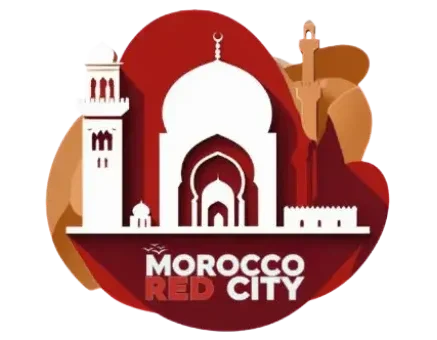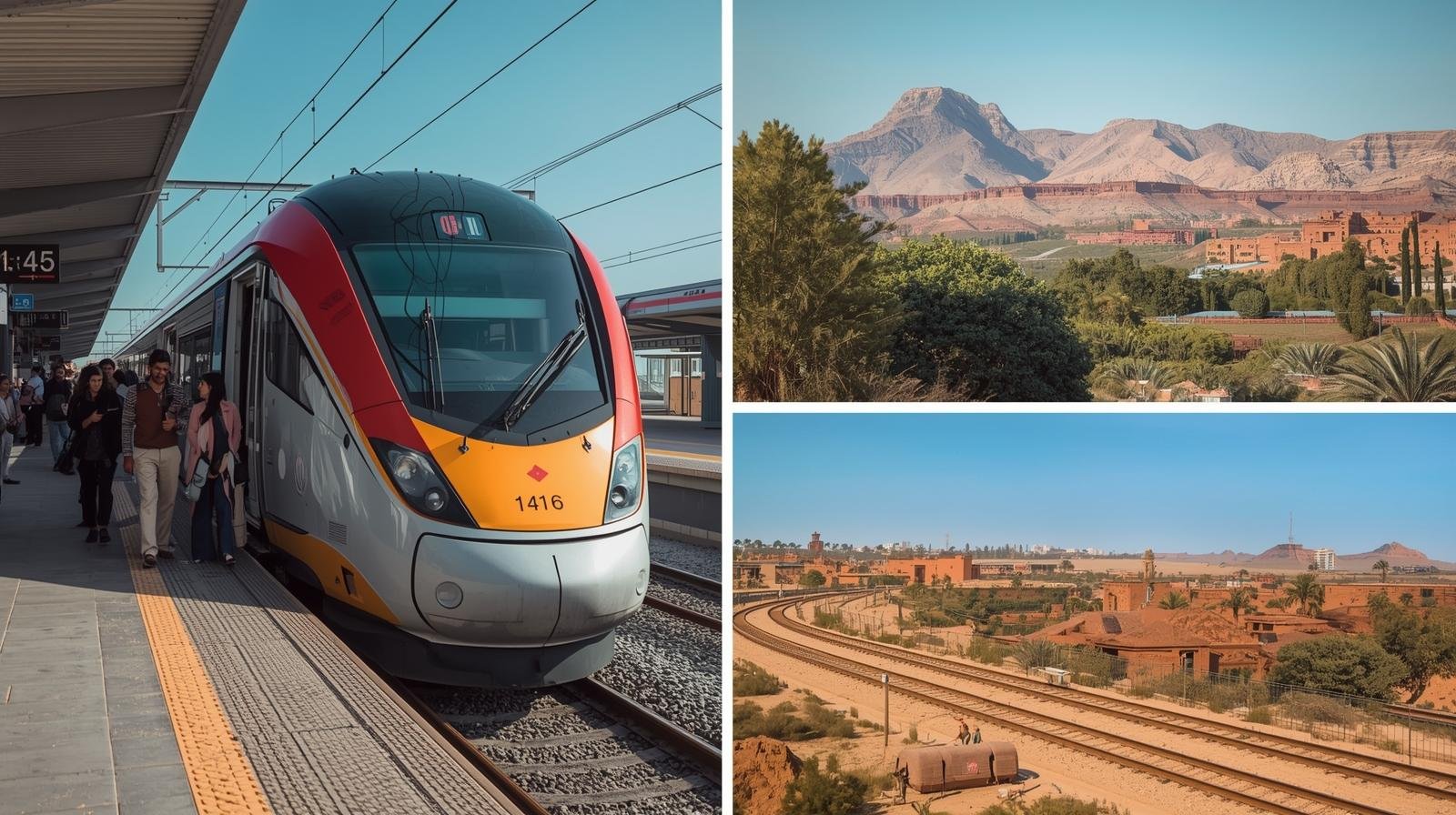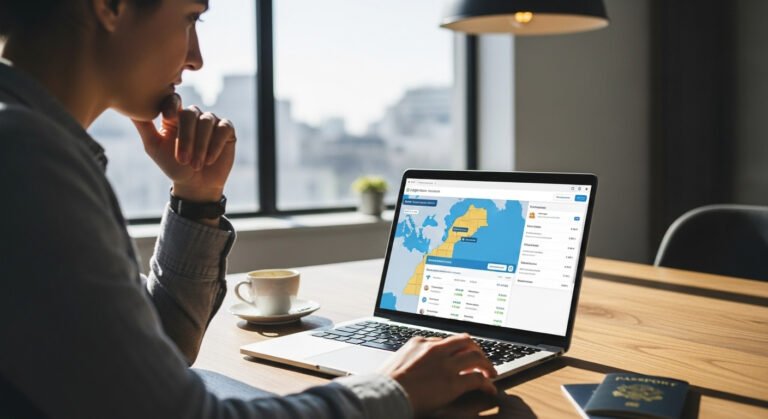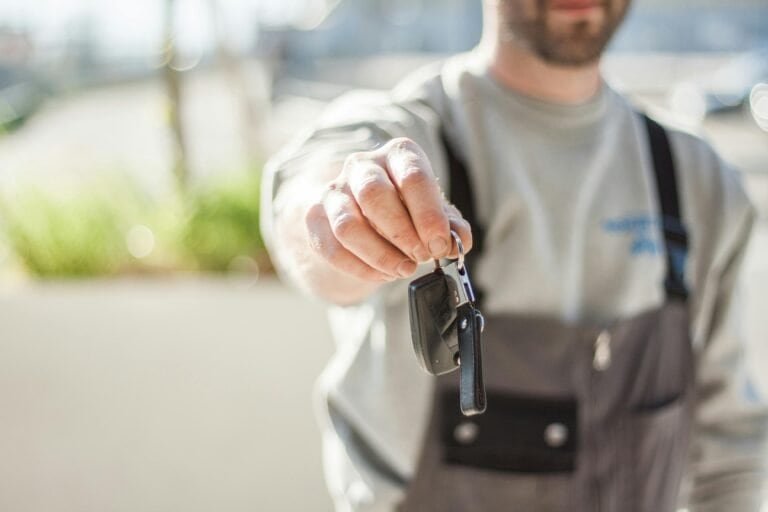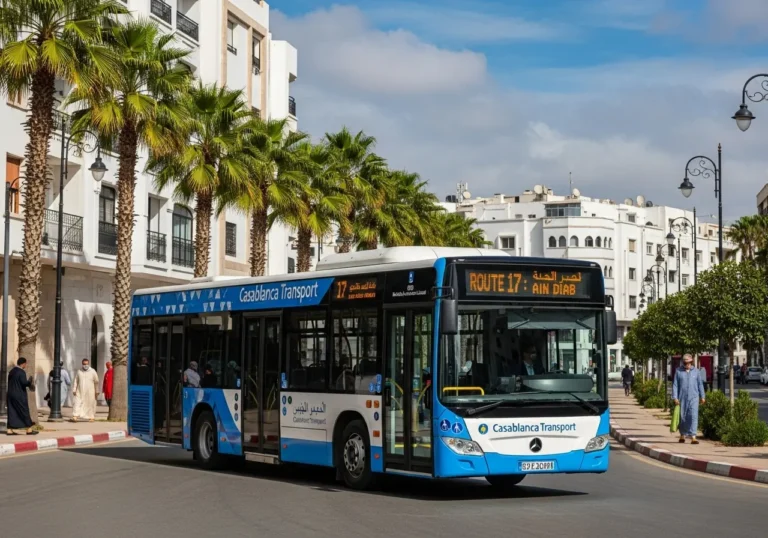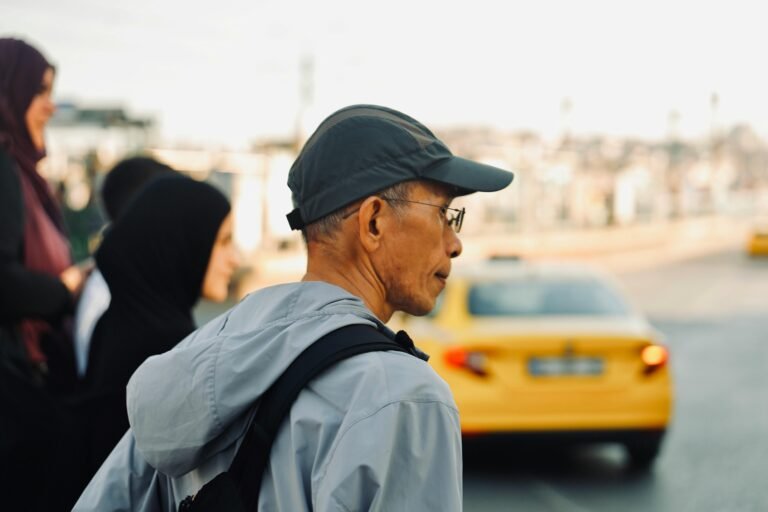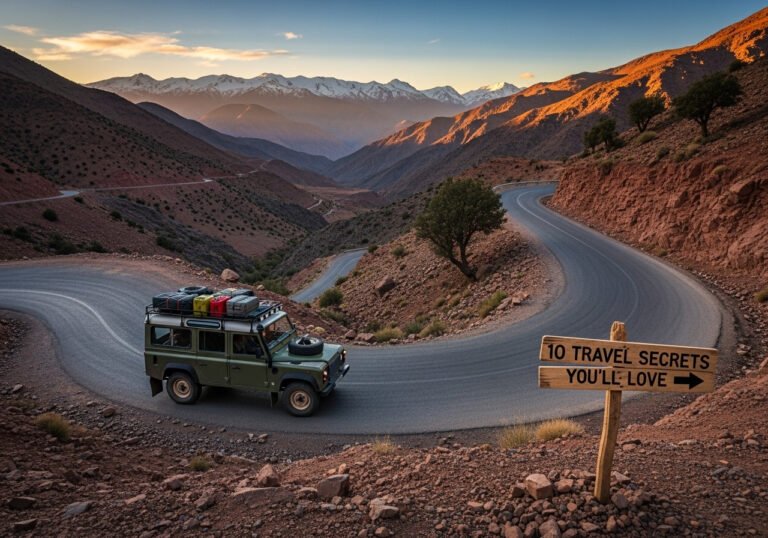Morocco’s Train System 5 Amazing Things to Know Before Riding
Why Morocco’s Train System is Honestly the Best Way to See the Country
Listen, I’ve tried pretty much every way to get around Morocco – buses that make you question your life choices, taxis where you’re basically haggling for your soul, and rental cars that… well, let’s just say Moroccan driving is an adventure I wasn’t ready for. But trains? Now we’re talking!
Morocco’s train system is seriously impressive – we’re talking about Africa’s best railway network here, and I’m not just being dramatic. The scenery alone will have you glued to the window, watching everything from bustling coastal cities to rolling hills that look straight out of a movie. And the best part? You don’t have to worry about getting lost or dealing with crazy traffic.
The crown jewel is definitely the Al Boraq high-speed train (more on that beauty later), which basically puts Morocco on the map as having one of the world’s fastest train systems. In this guide, I’m gonna tell you everything I wish someone had told me before my first trip – from booking tickets without losing your mind to figuring out which class is actually worth your money.
Morocco’s Train System: The Essential Stuff You Need to Know
Okay, let’s get the basics sorted before we dive deep:
ONCF runs the whole show: That’s Office National des Chemins du Fer if you’re feeling fancy, but basically they’re the guys in charge of all trains in Morocco. One company, no confusion – I love it when things are simple.
The Al Boraq is the speed demon: This high-speed beauty connects Tangier, Kenitra, Rabat, and Casablanca at speeds that’ll make your head spin (up to 320 km/h!). It’s like Morocco said “Hold my mint tea” and built something that rivals Europe’s best trains.
Morocco’s train system covers the north really well: Most major cities are connected, but don’t expect to train it to the desert or those gorgeous mountain towns like Chefchaouen. That’s bus territory, my friend.
It’s ridiculously affordable: Seriously, your wallet will thank you. We’re talking way cheaper than flying and honestly comparable to buses, but infinitely more comfortable.
Booking can be… interesting: The official website sometimes throws tantrums with foreign credit cards, but don’t worry – I’ve got your back with some workarounds.
First class is usually worth it: Trust me on this one. The price difference is so small you’ll kick yourself for not upgrading.
Getting to Know Morocco’s Train System Network
ONCF: The Bosses of Moroccan Rails
So ONCF isn’t just running trains – they’re basically Morocco’s transport wizards, making sure everything connects smoothly. They even coordinate with buses to get you places trains can’t reach. Pretty smart, right?
Morocco’s Train System Has Two Main Stars
Al Boraq (The Speed Machine): This is Morocco’s answer to France’s TGV, and honestly? It’s Africa’s first high-speed train, so Morocco’s basically showing off at this point. It zooms along the Atlantic coast connecting all the major players.
Al Atlas (The Reliable Workhorse): These are your classic trains that’ll get you everywhere else. They’re not as flashy, but they’re solid, comfortable, and they actually reserve your seat (unlike some trains that shall remain nameless).
Where Morocco’s Train System Can (and Can’t) Take You
The Connected Squad: Marrakech, Casablanca, Rabat, Tangier, Fes, Meknes – basically all the places you’ve probably got on your Morocco bucket list.
The “Sorry, No Train Here” Club: The Sahara Desert (obviously), Chefchaouen (that Instagram-famous blue city), Essaouira (the windy coastal gem), and Agadir. You’ll need buses or taxis for these spots.
But here’s the exciting part – Morocco’s got this crazy ambitious plan to spend $37 billion expanding the railway to connect 43 cities by 2040. They’re especially rushing to get high-speed trains to Marrakech and Agadir before the 2030 World Cup. Morocco doesn’t mess around!
Al Boraq: Morocco’s Train System Superstar
This Thing is Seriously Cool
When Al Boraq launched in 2018, it literally put Morocco in the top 7 fastest train systems worldwide. Not bad for a country people still think only has camels, right? (Spoiler alert: there are way more trains than camels in northern Morocco!)
Where Al Boraq Actually Goes
Right now, it runs from Tangier down to Casablanca, hitting Kenitra and Rabat along the way. It’s basically the Atlantic coast express, connecting Morocco’s powerhouse cities.
The Speed Will Blow Your Mind
I’m talking serious time savings here:
- Tangier to Casablanca used to take 4-5 hours. Now? Just over 2 hours. I literally finished a movie and we were there.
- Tangier to Rabat: 1 hour 20 minutes (I barely had time to finish my coffee!)
- Rabat to Casablanca: 45 minutes (perfect for a power nap)
What’s It Like Inside?
Picture this: spacious, air-conditioned, double-decker trains that are actually comfortable. There’s a cafe car where you can grab snacks and drinks, WiFi that works… most of the time (hey, nobody’s perfect), and these cool digital displays showing how fast you’re going. It’s like being in a sci-fi movie, but with better mint tea.
First Class Perks on Morocco’s Train System
If you go first class on Al Boraq, you get access to these swanky lounges at major stations with free coffee, juice, and water. Plus bigger seats and power outlets. Honestly, for the small price difference, why wouldn’t you?
Booking Morocco’s Train System: The Real Talk
Where to Actually Buy Your Tickets
ONCF Website (www.oncf-voyages.ma): The official site is great when it works, which is… most of the time? It’s got English options and shows all the schedules. But sometimes it gets moody with foreign credit cards. Pro tip: Try a VPN set to Morocco if it’s giving you attitude.
My Go-To Backup Sites:
- 12Go.com: These guys are solid and actually take your credit card without drama
- Bookaway.com: Another reliable option that won’t leave you hanging
- Omio.com: Super user-friendly app that works worldwide
Just Go to the Station: Sometimes old school is best school. You can buy tickets right there, pay in cash, and the staff will help you out (even if you’re playing charades to communicate). Just bring your passport for sleeper tickets.
When to Book Morocco’s Train System Tickets
Book ahead if you’re being fancy: Long trips, first class, overnight trains, or traveling during holidays? Yeah, book in advance. Trust me, you don’t want to be stuck in second-class standing room only.
Same-day tickets are usually fine: For shorter trips, you can often just show up. But get there 20-30 minutes early to be safe.
Morocco’s Train System Pricing (Your Wallet Will Be Happy)
Here’s the deal – there are “saver” tickets (cheaper but you’re stuck with them) and “flexible” ones (more expensive but you can change your mind).
Kids 0-3 are free (score!), 4-10 pay half, and 11+ are full price. We’re talking like $12 for first class from Rabat to Fes. That’s cheaper than a decent lunch in most places!
First Class vs Second Class on Morocco’s Train System: The Truth
First Class (Just Do It)
Look, I’m usually all about saving money, but first class on Morocco’s train system is totally worth it. You get assigned seats (no musical chairs!), more space, AC that actually works, and it’s quiet. Plus those Al Boraq lounges I mentioned? Chef’s kiss
Second Class (Perfectly Fine for Short Trips)
Eight people crammed in a compartment, seats that might be reserved (or not), and it can get pretty crowded. But hey, it’s cheap and you’ll definitely get the “authentic” experience. Just maybe not for a 6-hour journey, you know?
Navigating Morocco’s Train System Stations
The Big Stations That Might Confuse You
Casablanca: Casa Voyageurs is for the fancy high-speed trains, Casa Port is closer to the old medina. Don’t mix them up!
Rabat: Rabat Agdal for high-speed trains, Rabat Ville for everything else and tourist spots.
Tangier: Tanger Ville is the main hub, all shiny and modern since Al Boraq arrived.
Station Life
Modern stations are actually pretty nice – cafes, shops, decent bathrooms, and places to sit that don’t hurt your back. It’s not just a platform in the middle of nowhere.
Dealing with Taxis
Every station has taxis waiting like vultures, but in a good way! Always agree on the price first or make sure they use the meter. Have your hotel address written down in Arabic if you’re staying in a medina – trust me on this one.
Morocco’s Train System: The Routes Everyone Takes
Tangier to Casablanca: 2 hours of coastal views on the Al Boraq. It’s like a scenic movie, but real life.
Marrakech to Fes: 6.5 hours through some seriously diverse landscapes. Bring snacks and enjoy the show.
Casablanca to Rabat: Less than an hour. Perfect for day trips between the two cities.
The Epic Tangier to Marrakech Journey: You can either hop trains during the day (about 5 hours total) or take the overnight train and wake up in Marrakech. Both have their charm!
Overnight Trains on Morocco’s Train System: Adventure Time
The Overnight Experience
Okay, so you’ll miss the scenery, but you’ll save money on a hotel and wake up in a different city. That’s pretty cool, right?
Couchette Life
Four-bunk beds in a compartment, bedding provided, and doors that lock. It’s like a hostel on wheels. You can request same-sex compartments if that makes you more comfortable.
Pro Tip for Solo Female Travelers
Ladies, you can request women-only cabins on Morocco’s train system overnight trains. It’s more relaxed and you don’t have to worry about sharing space with random dudes.
Morocco’s Train System: Practical Stuff Nobody Tells You
Your Luggage Survival Guide
There are racks for big bags, but keep your valuables with you. I learned this the hard way when my phone “walked away” from an overhead compartment. Live and learn!
Food Strategy
The onboard food is decent, but I always pack my own snacks and water. You never know when you’ll get stuck between stations, and overpriced train sandwiches aren’t always appealing.
Staying Connected
WiFi exists on Al Boraq trains, but it’s about as reliable as Moroccan weather predictions. Get a local SIM card or eSIM – your Instagram followers will thank you.
Safety on Morocco’s Train System
Morocco’s trains are genuinely safe. Security folks patrol regularly, and I’ve never felt unsafe, even traveling solo. Just use common sense in busy stations.
Cultural Heads Up
Dress modestly (this is Morocco, after all), give up your seat to elderly folks, and keep the PDA to a minimum. Basic respect goes a long way.
When Morocco’s Train System Isn’t Enough
Supratours Buses (ONCF’s Bus Cousins)
These buses fill in the gaps where trains don’t go. Want to hit Essaouira or the Sahara? You’ll need these guys. The cool thing is you can often buy combined train+bus tickets.
Choosing Your Transport Wisely
Morocco’s Train System: Fast, comfortable, reliable between major cities Buses: Essential for off-the-beaten-path destinations. Grand Taxis: Good for short hops and flexible routing (but negotiate that fare!)
Morocco’s Train System: Your Adventure Starts Here!
Here’s the bottom line – Morocco’s train system is hands down the best way to see the country if you’re hitting the major destinations. It’s affordable, comfortable, safe, and honestly kind of fun. The Al Boraq high-speed train alone is worth the trip, and the whole network keeps getting better.
Whether you’re backpacking on a budget or living it up in first class, Morocco’s trains have got you covered. The scenery is gorgeous, the people are friendly, and you’ll have stories to tell for years.
So stop overthinking it and book that ticket! Morocco’s train system is waiting to show you the country in style. Trust me, once you experience the magic of zooming through the Moroccan countryside with a mint tea in hand, you’ll wonder why anyone bothers with anything else.
